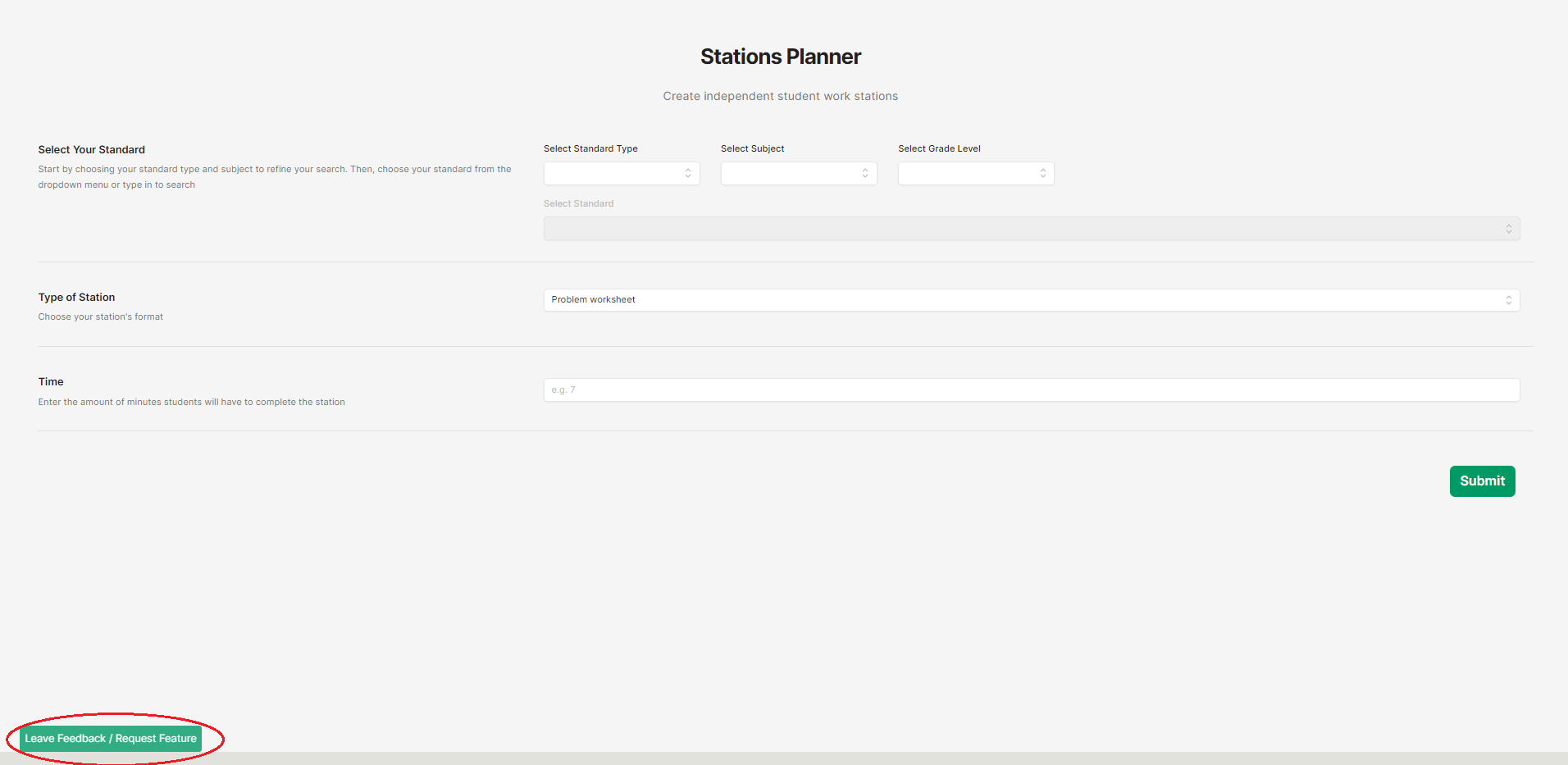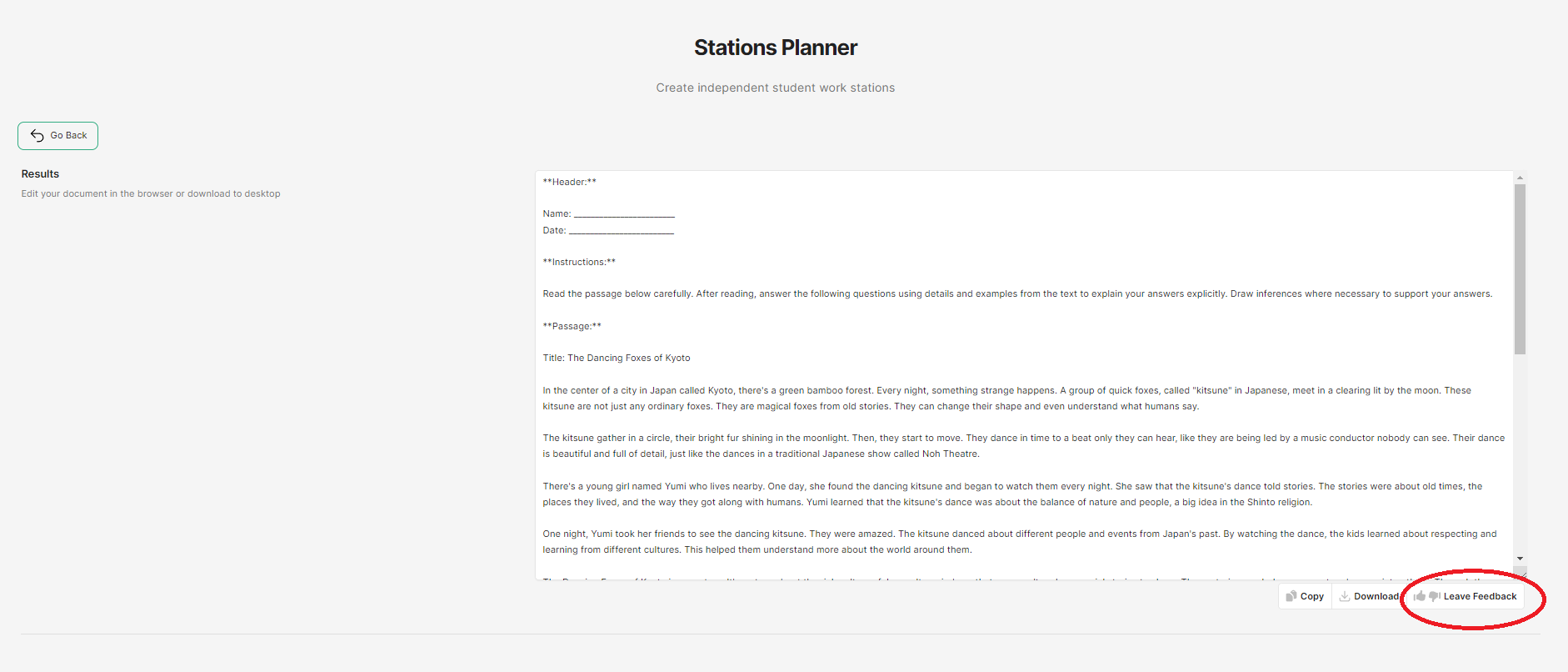Design Principles for Better Lesson Planning
There are many tools out there that can generate a full lesson plan for you at the push of a button. We're not one of them because we don't believe that equates to effective teaching.

As teachers, we've all had that moment, when we teach a lesson so engaging and so aligned that, at dismissal, the students naturally say the objective in their own words as they tell their parents what they learned today.
Those moments are rare and beautiful. Cherish them!

A couple of weeks ago, I had that same moment after an user interview with an Assistant Principal who uses Planning Period to support her new teachers as they learn to lesson plan. While reviewing her feedback, I was stricken by how much of our design values she had internalized just by way of using our tools, and that's just about everything a designer could ask for.
Today, let's talk about the main tenants that drive the design for our suite of tools at Planning Period.
For my "Ain't nobody got time for that" people, here's your TDLR:
- Our design process is driven by student context and educational standards 🧑🏾🎓
- We believe lesson planning starts with the goal in mind 🥅
- We hate afterschool PD as much as you do 😤
- Your feedback is our strength 🔁
Designed for how Lesson Planning is, and How it Should be
At the center of our design process for Planning Period's suite of tools are two tenets:
- All tools should align with the learning goals set by our current educational system.
- All tools should be responsive to a student's context, interests, and identities.
First, we considered the systemic expectations around teaching and learning in our country. These, in legalese, are the educational standards adopted by nearly every state and school system.
Though standardized education can be a topic of debate among teachers and school leaders nationwide, we view them as the current systemic anchor. They help us measure and compare student achievement at scale. Therefore, we must ensure that our tools reference and build excellent lesson resources in alignment with these standards.
Second, our approach is rooted on insights from our fieldwork with amazing teachers and inspiring school leaders. We've understood that responding to student context is central to success in schools. From wearing a Luchador mask in math class for an exit-ticket challenge to playing the top 100 hits during school transition hours on the loudspeakers, we've witnessed the immense power of engagement that planning for context brings to student achievement growth and overall joy. Hence, we've prioritized centering that joy in the lesson design process.
Opinionated about Lesson Planning
As a former teacher and teacher trainer, I understand that the most time-consuming and impactful task for any teacher is their lesson planning process. At Planning Period, our stance on the lesson design process is twofold:
- Lesson planning should never be accomplished with just one click.
- Lesson planning should always start with the goal in mind.
There are many tools out there that can generate a full lesson plan for you at the push of a button. We're not one of them because we don't believe that equates to effective teaching. Great teachers dissect their lesson plans into components, crafting each intentionally to help students meet the lesson's objectives.
We also believe that every lesson should begin with its end goal in mind. That's why we developed the assessment generator as one of our most sophisticated tools. A profound understanding of what your exit-ticket measures will guide you in designing your lesson to achieve that specific goal.

Empathy for Teachers
We know that on a daily basis, a teacher's time and attention is pulled in many directions. This is why we strive to reduce reduce a teacher's cognitive load when they use our tools.
This intention is evident in our dashboard, designed to focus a teacher's attention on the act of lesson planning, one component at a time.

Moreover, When teachers delve into a part of their lesson plan, our tools only display inputs as they become necessary.
Our tools mirror the process teachers follow to create their lesson components, and will display inputs as they're necessary
When it comes to empathy for our users, our design goal is simple. No PD should be required in order for teachers to begin using our tools.

Driven by User Feedback
We've taken a leaf out of the best educators' books for this principle. Just as top-tier teachers incorporate student feedback to enhance their lessons, we weave user feedback into our feature design process. Teachers are inherently generous, and it's largely due to their feedback that our tool design has evolved significantly.
This is why we've embedded options for teachers to provide feedback and request features throughout our platform and on every app. In fact, thanks to invaluable user feedback, some of our most cherished features were realized:


Users can provide feedback at every stage of their resource creation process
- Our Question Contextualizer tool
- The ability to create assessments based on teacher-provided text
- Parent instructions in the student's home language
- Differentiated checks for understanding
Each of these features, and the many more to come, have been heavily influenced by our users' desire to improve their lesson planning process.
Tying it all up
At Planning Period, we're privileged to design tools for a community of educators who deeply value the rigor, effectiveness, and the responsiveness of the materials they present to their students. We're driven to design tools suitable for both the current classroom landscape and the classroom of the future, while aiming always to simplify teachers' lives.
